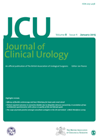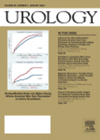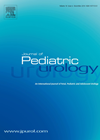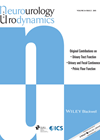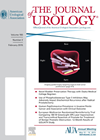
Journal Reviews
Day-case monopolar and bipolar transurethral resection of the prostate
The aim of this study was to assess the safety and efficacy of performing monopolar (mTURP) and bipolar transurethral resection of prostate (bTURP) as a day-case. This was a prospective two-centre study. One centre performed day-case mTURP (group M) and...
Cystolithotripsy using the holmium laser: evolving uses for the laser lithotrite
This small prospective study examined 20 patients who were undergoing laser cystolithotripsy for bladder stones. Laser lithotripsy was performed using either a 365 or 550µm holmium:YAG laser fibre with a power setting of 1.0J and a frequency of 10Hz. Stone...
What is the significance of prostatic calcification?
This prospective study on men undergoing transrectal ultrasonography (TRUS) biopsies was performed to evaluate the prevalence and to classify prostatic calcification (PCalc) on TRUS and correlate the findings with histology. Images of the prostate were saved at three defined regions:...
Laparoscopic ureteral ligation (clipping)
Ectopic ureters in the presence of an upper moiety duplex kidney, or non functioning upper moieties, are traditionally treated with a heminephrectomy (open or laparoscopic). This carries significant risks, especially loss of the remaining lower moiety. These authors describe a...
Cumulative incidence of outcomes and urologic procedures after augmentation cystoplasty
The authors of this paper describe the cumulative incidence of outcomes and surgical procedures following paediatric augmentation cystoplasties in the USA. They included all children <18 years over an 11-year period in their study and used the Pediatric Health Information...
Hypercalciuria in children with monosymptomatic nocturnal enuresis
Nocturnal enuresis, defined as intermittent urinary incontinence, regardless of the presence or absence of daytime symptoms, is common. Monosymptomatic nocturnal enuresis – MSNE (no daytime symptoms) has four main causes identified with it: poor vasopressin action, nocturnal polyuria, poor arousal...
MRU for diagnosis of paediatric ureteral stricture
Hydronephrosis is diagnosed antenatally in approximately 1-5% of all pregnancies. A rare cause is ureteral stricture, found in 4% of these cases. This study reports a series of 28 strictures diagnosed over a 10-year period by magnetic resonance urography (MRU)...
Penile clamp device – a new indication?
This study originates from New Zealand and looks at men affected by post-prostatectomy incontinence (PPI). These patients are difficult to manage with the options of further surgery, indwelling catheters or pads. The aim of this questionnaire study (IIQ 7) was...
BPH therapy: how to find one’s way through the maze?
This communication is from the Young Academic Urologists (YAU) group of the European Association of Urologists (EAU). A purpose-built questionnaire of current practice was sent to 2000 members, of which 637 responded (68% were aged 50 or younger). Alpha blockers...
Screening tool for incontinence: Michigan index
The Michigan incontinence symptom index (MISI) is a validated measure. This study further evaluated its relevance. MISI is a 10-item measure; MISI domain 1-8 and bother domain 9-10. Two hundred and fourteen women were included in the study, with a...
SUSPEND suspended MET
This review is on the recent groundbreaking evidence on medical expulsive therapy (MET). MET using alpha adrenergic blockers (like tamsulosin) are in regular clinical practice. Even though it is an off label prescription, it is well accepted and practised world...
HPV prevalence in invasive penile cancer and association with clinical outcome
Penile cancer risks can be increased by a number of causes such as smoking, phimosis, poor hygiene, multiple sexual partners and history of gential warts or other sexually transmitted diseases. It has been found that circumcised men have a lower...

